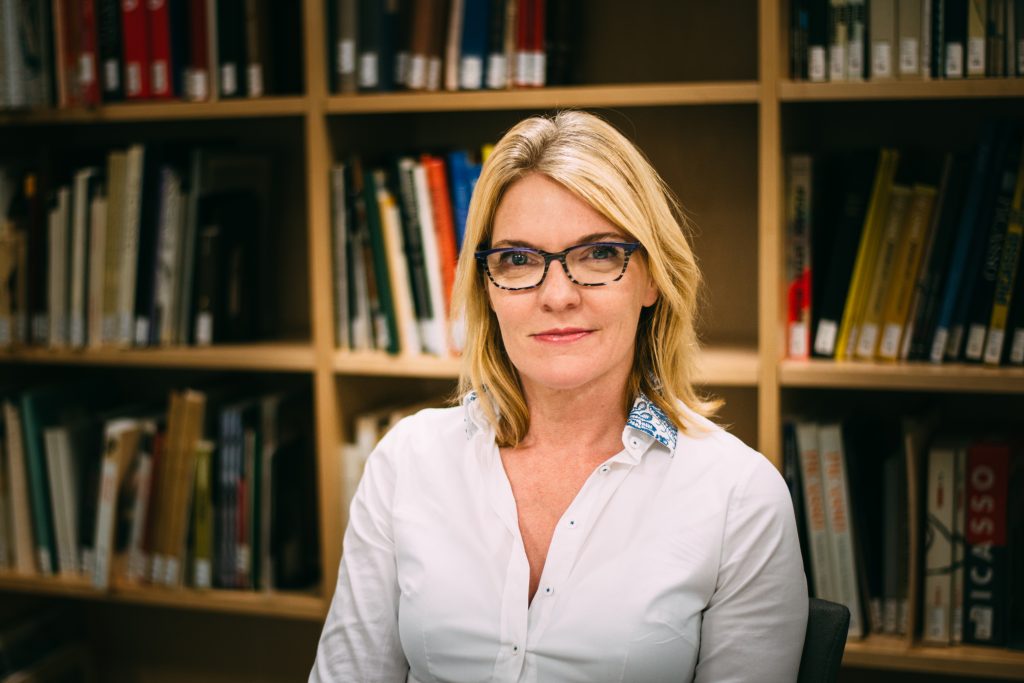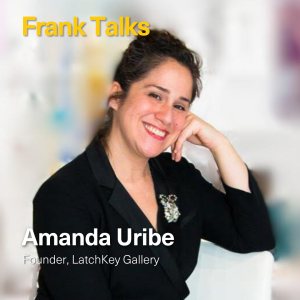Michèle Wije is the Curator of Exhibitions at the American Federation of Arts where she is responsible for organizing and managing several domestic and international exhibitions. She is currently curating a show titled, Whitfield Lovell: Passages which will travel to six museums in the United States. As the Associate Curator of the Katonah Museum of Art, she curated groundbreaking shows including, Bisa Butler: Portraits, which traveled to the Art Institute of Chicago and Sparkling Amazons: Abstract Expressionist Women of the 9th St, Show . Wije began her career in the Modern and Contemporary Art Department of the Metropolitan Museum of Art, where she specialized in twentieth century European Modernism with a focus on German art. She has organized several international loan exhibitions including the award winning, Glitter and Doom: German Portraits of the 1920s as well as Rooms with a View: The Open Window in the 19th Century, Humor and Fantasy: The Berggruen Paul Klee Collection, Max Beckmann in New York, Marsden Hartley’s Maine, Edvard Munch: Between the Clock and the Bed, Obsession: Nudes by Klimt, Schiele and Picasso from the Scofield Thayer Collection and Lucio Fontana. On the Threshold. Michèle holds a PhD in Art History from the Institute of Fine Arts, New York University.
What was your first job in the Arts and what was the most useful or important thing you learned in that experience?
In the late 1980s, I worked in London as a picture researcher for the Grove Dictionary of Art. Written entries came in from art historian by snail mail (email was in the future). My job was to illustrate them by sourcing works of art, acquiring transparencies and negotiating image rights. It was a daunting task. Locating images without “Google” to assist you is almost unimaginable to me now. It taught me tenacity, telephone etiquette and patience. I developed terrific research skills that I still rely upon today.
Tell us a little more about yourself. When did you realize you wanted to pursue a career in this industry?
I never had a ‘Eureka” moment. I came to New York with a small baby and no work permit in the early 1990s. As a source of intellectual engagement, I enrolled in an MA Program at the Institute of Fine Arts, which eventually turned in to a PhD. Later, I worked in all kinds of art-related jobs in galleries, auction houses and eventually museums as I tried to find my path. I credit the superb faculty at the IFA for stimulating an everlasting passion for art and for setting me on the journey.
What do you do now?
I am currently a Curator at the American Federation of Arts in New York
Where are you from and what is the arts community like there?
I was born in England – but moved a great deal as a child, living in South Africa and Germany among other places. I traveled extensively. In Europe, the arts community seems very similar to the US. I lived in South Africa during apartheid and was quite young, so I wasn’t aware of the art scene there, which is regrettable.
Has where you come from shaped what you do in the arts today?
No. For several years though, I was engaged in serious provenance research for works of art looted by the Nazis as I am a fluent German speaker. You need perseverance for this task, which is true of succeeding in the art world in general.
What is the best piece of advice you can give about working in the art world?
Roll with the punches.
What is one of the greatest accomplishments in your career so far? And what has been a challenge?
Accomplishment: Discovering the work of Black textile artist, Bisa Butler, and curating her inaugural exhibition, Bisa Butler: Portraits for the Katonah Museum of Art and then arranging for it to travel to the Art Institute of Chicago.
How is your current job adapting to the ever-changing digital landscape? What do you think can be done better, if anything?
In its 110-year history the American Federation of Arts has been known for its ability to adapt and pivot to changing times. I have become interested in NFTs and meme art – maybe that would make for a fascinating travel exhibition.
What is one of the weirdest things you have had to do on the job?
I once kept a taxidermied and copperized cat under my desk at The Met for the artist, Pierre Huyghe. The “green” cat lived there for several months before he was reclaimed.
What do you think defines a good employee? And what defines a good boss?
A good employee is someone who understands that not everything is about them. A good boss is someone who understands that not everything is about them.
What is your advice for making yourself stand out in the workplace? Any good tips for giving a great interview?
Just do your work to the best of your ability, be a problem solver and it will get you noticed. In an interview be confident enough to highlight your accomplishments, but humble enough not to embellish them.
What artwork is/was in your home office?
A fabulous and large painting of an owl that my 25-year-old daughter made when she was in first grade.
What is/was your greatest WFH challenge? Or a WFH luxury you don’t want to lose ever again?
Not being able to meet co-workers and museum colleagues or see art in person.
WFH luxury? – there are too many to choose just one.
What aspect of the art world this year (2022) is most exciting to you?
Museums are creating great shows, gallery hopping is happening and art fairs are back, a buzz is in the air.
Is there any advice you would like to give people entering the art world?
Know that your path will not be linear and that your personal growth will come from unexpected places.
What is the best exhibition you have seen recently?
Nasher Museum at Duke University – a small exhibition curated by Molly Boarati titled, Off the Map:The Provenance of a Painting, which cleverly unpacks the history of a painting by Joseph Wright Derby.
How do you think the art world can become more transparent?
Get rid of the smoke and mirrors. Blockchain will help.
How do you think art should be shared and/or experienced moving forward?
All the traditional ways work well. But I’d like to see something in the virtual reality space that is an immersive experience. And more sound art please.
If you could own a work by 5 different artists, who would be in your collection?
Ruth Asawa
Vilhelm Hammershoi
Sonja Sekula
Whitfield Lovell
Lucas Cranach




